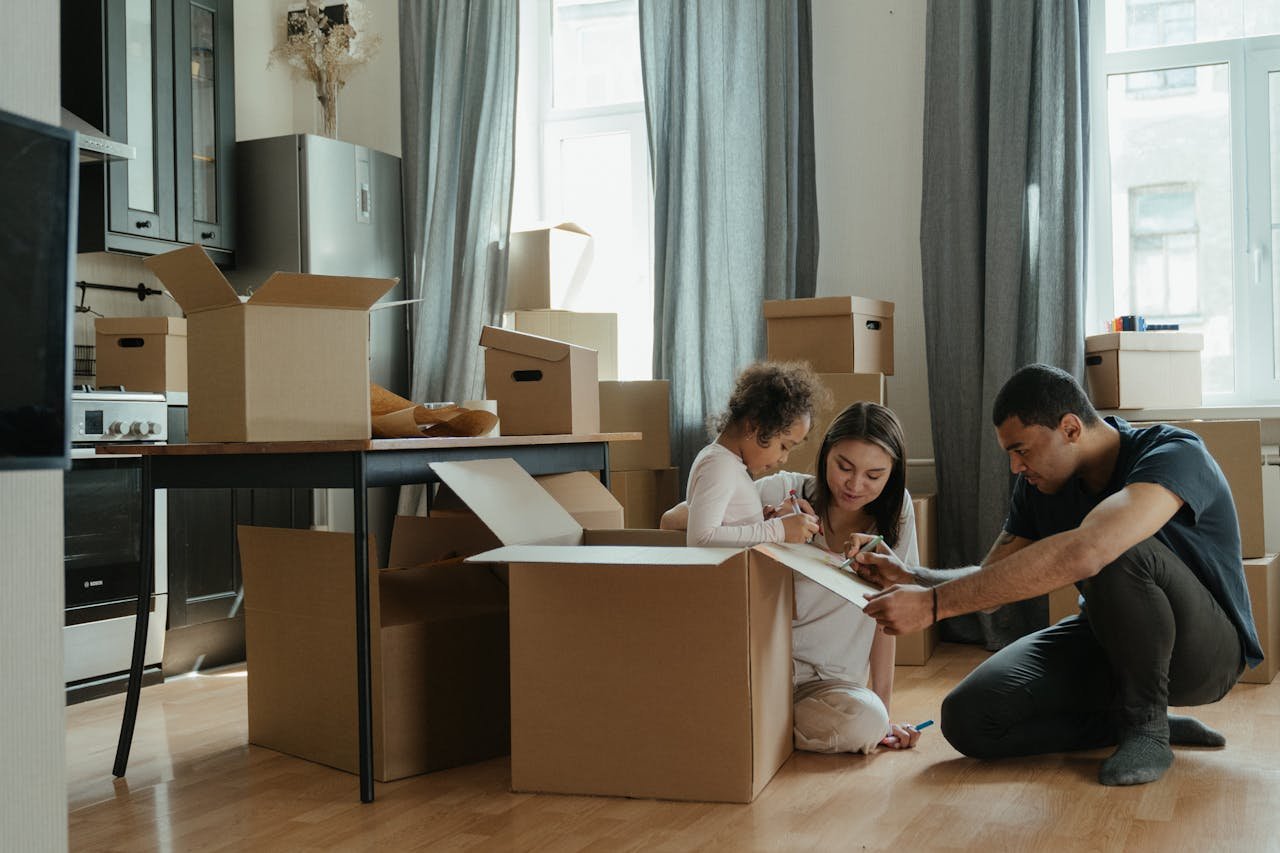Moving with kids isn’t just about switching addresses—it’s a full-on family adjustment. Between the boxes, the goodbyes, and trying to keep routines intact, it’s easy to feel overwhelmed. Kids sense everything, and when their space, schedule, and sense of normal suddenly shift, emotions run high.
This is especially true if you’re making a bigger move, like leaving a familiar place for a new start in a different part of Florida. Let’s say you’re planning a move to a busy area like Boynton Beach, where traffic, neighborhood access, and tight timelines can add pressure. When you’ve got kids in the mix, even local moves can get complicated fast.
The good news? With a few simple strategies, you can make the process smoother for everyone. Let’s walk through how to keep your kids happy and safe when moving—without losing your mind in the process.
1. Hire Trusted Professionals to Help You Stay on Schedule
When you’re juggling work, parenting, and packing all at once, hiring reliable help makes a big difference. Trying to coordinate every part of the move while also keeping your kids calm and cared for is tough. A professional moving team can take a huge weight off your shoulders—literally and mentally.
If you’re planning a move from or to the area, working with trusted Boynton Beach movers gives you more space to focus on your family. Instead of lifting furniture or managing logistics, you can prioritize your kids’ routines and emotional needs. It’s one of the best ways to stay on schedule without the added stress.
Choose a company that offers flexible scheduling, clear pricing, and solid experience with residential moves. It’s not just about getting your things from one house to another—it’s about making sure your family arrives in one piece emotionally, too.
Talk About the Move Early—and Often
It’s tempting to wait until the last minute to tell your kids you’re moving, especially if you’re dreading the conversation. But talking about it early helps them process the change better. Give them time to ask questions, express their feelings, and get used to the idea.
For younger kids, keep the conversation simple. Use books or toys to show what moving means. For older ones, be direct but positive. Let them know what to expect and when. Reassure them that their favorite things are coming along too.
And don’t stop with one talk. Check in with them regularly. Moving is a process, not a one-time event, and your kids will feel more secure if you keep the lines of communication open.
Let Them Be Part of the Process
Giving kids a role in the move helps them feel included. Even small tasks can give them a sense of ownership. Let them help label boxes with stickers or pack their own toys. They can also choose what goes in their first-night bag.
Older kids may want to help plan the layout of their new room. Let them draw it out or choose paint colors if you’re updating the space. These small decisions help build excitement and give them something to look forward to.
Another idea? Assign them a “moving day job.” Maybe they hand out snacks or check that all stuffed animals are accounted for. Even if it’s small, being part of the plan helps them feel more in control.
Keep Safety in Check on Moving Day
Moving day is chaotic. There are open doors, stacked boxes, heavy furniture, and people going in and out. It’s not exactly a toddler-safe environment. That’s why planning for safety is just as important as planning the move.
If possible, arrange for someone to watch your kids during the actual move. If that’s not an option, set up a “kid zone” in one room. Fill it with toys, snacks, and anything else to keep them busy. Close the door or gate it off so they stay out of the way.
Also, be mindful of things like cleaning supplies, sharp objects, and small parts. Keep these out of reach at all times. Label boxes clearly so you know where dangerous items are packed.
Even older kids can get hurt during a move if they’re not careful. Talk to them ahead of time about what to avoid and when to ask for help. A quick safety talk can prevent accidents and keep everyone calm.
Make the New Place Feel Like Home—Fast
The faster you settle in, the faster your kids will too. Start by setting up their room first. Familiar items like bedsheets, toys, and posters can help them feel safe. Even if the rest of the house is still in boxes, a cozy room goes a long way.
Hang up a few family photos, arrange their books, or play their favorite music in the background. The goal is to recreate their routine and surroundings as quickly as possible.
Once you’re a bit settled, go explore the new neighborhood. Find the local park, grab ice cream, or take a short walk together. Showing your kids that the new place can be fun helps them feel excited instead of unsure.
Expect Big Feelings (and Be Patient)
No matter how well you plan, moving is emotional. Kids might cry, act out, or get clingy. That’s normal. They’re adjusting to a huge change, and it’s okay if it takes time.
Give them space to talk about how they’re feeling. Be patient when they seem frustrated. Try to stick to routines and offer extra hugs or comfort items when needed.
If they’re missing old friends, set up a video call. Help them write letters or draw pictures for friends they left behind. These small actions make a big difference in helping them feel connected.
Keep checking in, even after the move is complete. Transitions can take weeks or even months to feel normal. What matters most is that your kids know they’re supported every step of the way.
Moving with kids doesn’t have to feel like chaos from start to finish. Sure, there will be challenges—but with a little planning, you can make the process easier for everyone. Keep their routines in place as much as you can, talk them through the changes, and involve them in small decisions along the way.
It’s okay if emotions run high—yours and theirs. Just take it one step at a time. The goal isn’t a perfect move. It’s a move that gets your family through safely, calmly, and maybe even with a few good memories along the way. You’ve got this.





